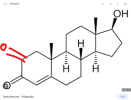For some compounds/raws, heating to the melting point will destroy the raws. You do not need to heat to the melting point. Just heat until dissolved. The temperature required for that depends on the solubility of the raw in the specific carrier oil you use.
Hearing past the melting point won’t necessarily degrade the raw. Degradation happens near the “decomposition temperature” which is also unique to each compound. The decomposition temperature is generally well above the melting temp of long esters (undecyclonate) because they have very low melting points. but the decomposition temperature can also be well below the melting point of “no-ester”/“base” raws, which have very high melting points. Generally the temperature of decomposition won’t change “much” between different esters of the same compound, but the melting point will.
There’s also not a single “decomposition temperature” per se. Rather, there’s an equation (Arrhenius Equation) which shows that noticeable decomposition happens at all temperatures, just glacially slowly at like 40F, and in a matter of minutes at 250F.
I don’t find comprehensive thermal decomposition data immediately handy but for a general “sense”:
https://www.scholarsresearchlibrary...adation-products-by-rapid-rpuplcms-method.pdf
This shows that heating test base to 80C (176F) for 6 hours results in 1.6% of the testosterone degrading. This is probably the highest temperature a high quality UGL would use to try to dissolve it in solution (test base / test no ester is a terrible example because it doesn’t dissolve and is usually injected as a “suspension” in either oil or bac water but whatever just roll with it okay) and all esterified testosterone would need lower temperatures than test base to dissolve. However, heating test base to its melting point, 155C (311F), for 3 hours resulting in 40% of the raw undergoing thermal decomposition. Also some people put their vials in boiling water (100C) when they crash, and that could result in more degradation of testosterone than is desired. I can't find data on how much/how fast.
However, the melting point of testosterone undecanoate is only 60C…so you could heat that to its melting point and expect minimal or no degradation of the testosterone.
Tl;dr: Brewing temperature limit has nothing to do with melting point. There’s a concept of “decomposition temperature” but it’s more of a guideline/curve/rangeand not a strict single number.
Just heat to the lowest temperature that the compound dissolved in your oil. Minimize time spent hot too - degradation is caused by “temperature times time”, so minimize both,
but if you have to choose between them, temperature is way more important than time.
Also keep your compounds away from UV light for more than a few hours. That consistently degrades raws and oils over time (slowly, but surely).
HGH and other peptides also have a “temperature of denaturization” in addition to “temperature of degradation” but it will be higher than the temperature of degradation and if you’re heating peptides you’re already completely doing it wrong.
Effects of thermal and mechanical stress on the physical stability of human growth hormone and epidermal growth factor - PubMed you’ll lose 20% of the hGH by heating it to 70C (50% if you leave it that hot for 3 hours). But it will “denature” at 74C…at which point you will lose 100% of it pretty instantly.
Cooking eggs is an example of denaturing proteins/peptides. It’s not burned, but it’s clearly changed.


